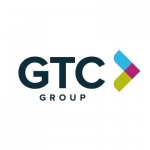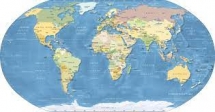|
|
Seismic Stratigraphy Workshop
USD 5,850
|
Venue: London
Other Dates
| Venue | Date | Fee | |
|---|---|---|---|
| London, United Kingdom | 01 - 05 Dec, 2025 | USD5850 |
This course is geared towards explorationists who are involved in screening seismic data for possible leads that they develop into prospects. This is a hands-on course (workshop format) where participants will spend most of their time performing seismic sequence and facies analysis on lines provided by the instructor. The teaching collection of seismic data are text-book examples collected from basins across the globe. The course not only covers the practice of sequence stratigraphy using seismic data (AAPG Memoir 26), but spends quite a bit of time on seismic facies analysis in cross-sectional view. Our module on the use of seismic horizon and stratal slices was revised in July 2014 after taking a detailed course with Henry Posamentier – the pioneer of seismic geomorphology.
The course also covers clinoform trajectory analysis that allows the interpreter to predict whether the clinoforms on their seismic data will be sand-rich or if the sand has by-passed the shelf and been deposited in the basin as deepwater fans. Through lots of exercises by the end of the course everyone should be proficient at sequence analysis on seismic lines and be able to interpret depositional environments and net:gross using seismic facies analysis. Participants are strongly urged to bring paper copies of their own seismic data to work on, these data will not be shared with anyone and will only be reviewed by the instructor.
Who Should Attend?
Geologists and Geophysicists that spend most of their time interpreting seismic data on the workstation. Whether you are an early career geoscientist wanting to learn a systematic methodology for seismic interpretation or an experienced professional wanting to learn some of the latest techniques to have emerged in seismic stratigraphy, this is the course for you.
Course Outcomes
At the end of the course participants will have a greater understanding of and have developed the following key attributes:
- Recognition and meaning of reflection terminations such as onlap, offlap, toplap etc
- Seismic facies analysis and how reflection configurations can be used to interpret environments of deposition, risk of reservoir presence and quality
- Seismic Imaging of Carbonate Platforms: biostromes vs bioherms, mounds vs reefs, atolls, build-ups, banks and platforms
- Integrating seismic interpretation with biostratigraphy:
- Morphology and differences between siliciclastic and calciclastic clinoforms
- Proficiency at seismic sequence analysis
Key Course Highlights
- Seismic Geomorphology: Differences between seismic time slices, horizon and stratal slices, the workflow for interpretation, range of seismic
- Exercises on performing sequence analysis on high quality seismic data from passive (trailingedge) continental margins
- Assigning Net: Gross values to different parts of carbonate platforms in seismic, effects of karstification and its seismic expression
- Range of seismic attributes (spectral decomposition, curvature, etc) in fluvial systems, shallow marine systems, deepwater systems, and carbonates
- Morphology and differences between siliciclastic and calciclastic clinoforms, advection vs diffusion dominated clinoforms
- Shelf vs shelf margin-clinoforms, siliciclastic vs carbonate clinoforms.
| London | Aug 04 - 08 Aug, 2025 |
| London, United Kingdom | 01 - 05 Dec, 2025 |
| USD 5,850.00 | (3 Days,10 Days($11700)) |
Jennifer Nwabueze 09056761232




